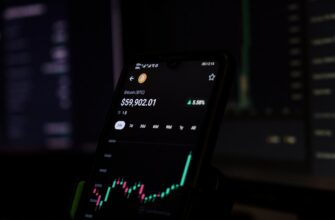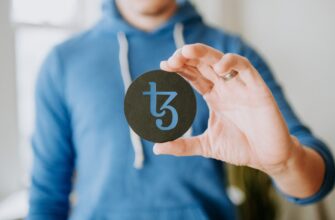- What Does “Cryptocurrency Equal to Dollar” Really Mean?
- How Dollar-Equivalent Cryptocurrencies Maintain Their Peg
- Top 5 Dollar-Equivalent Cryptocurrencies in 2024
- Why Use a Dollar-Pegged Cryptocurrency? Key Benefits
- Risks and Challenges of Dollar-Equivalent Cryptocurrencies
- How to Buy and Use Dollar-Equivalent Cryptocurrencies
- FAQ: Cryptocurrency Equal to Dollar Explained
What Does “Cryptocurrency Equal to Dollar” Really Mean?
When people search for “cryptocurrency equal to dollar,” they’re typically referring to stablecoins – digital assets designed to maintain a fixed 1:1 value with the US dollar. Unlike volatile cryptocurrencies like Bitcoin or Ethereum, these dollar-pegged tokens offer price stability by holding equivalent reserves in fiat currency or other assets. This innovation bridges traditional finance with blockchain technology, allowing users to transact in crypto while avoiding market turbulence. Major examples include Tether (USDT) and USD Coin (USDC), which collectively handle billions in daily transactions across exchanges and decentralized platforms.
How Dollar-Equivalent Cryptocurrencies Maintain Their Peg
Stablecoins achieve dollar parity through sophisticated reserve mechanisms:
- Fiat-Collateralized Reserves: Entities like Circle (issuer of USDC) hold actual USD in regulated bank accounts equal to the circulating supply.
- Crypto-Collateralization: Protocols like MakerDAO’s DAI use overcollateralized crypto assets (e.g., ETH) to absorb price fluctuations.
- Algorithmic Controls: Some stablecoins adjust supply automatically via smart contracts to maintain the peg (e.g., TerraUSD’s original model).
- Hybrid Models: Combining multiple methods for enhanced stability and decentralization.
Regular third-party audits (like attestations for USDC) provide transparency, though reserve quality varies significantly between issuers.
Top 5 Dollar-Equivalent Cryptocurrencies in 2024
- Tether (USDT): The largest stablecoin by market cap ($110B+). Backed by reserves including cash, bonds, and commercial paper.
- USD Coin (USDC): Fully reserved by cash and US Treasuries. Known for regulatory compliance and monthly attestations.
- DAI (DAI): Decentralized stablecoin backed by crypto collateral. Maintains parity via autonomous smart contracts.
- Pax Dollar (USDP): Regulated by NYDFS with 1:1 cash reserves. Popular in institutional circles.
- TrueUSD (TUSD): Offers real-time attestations and is favored for its transparent proof-of-reserves.
Why Use a Dollar-Pegged Cryptocurrency? Key Benefits
Stablecoins solve critical problems in the crypto ecosystem:
- Hedging Against Volatility: Instantly convert volatile assets to dollar equivalents during market dips.
- Faster Cross-Border Payments: Send dollar value globally in minutes for fractions of traditional wire costs.
- DeFi Integration: Earn yield through lending protocols (e.g., Aave, Compound) without price risk.
- Exchange Liquidity: Serve as primary trading pairs on platforms like Binance and Coinbase.
- Inflation Resistance: Preserve purchasing power in economies with unstable local currencies.
Risks and Challenges of Dollar-Equivalent Cryptocurrencies
Despite their utility, stablecoins carry notable risks:
- Regulatory Uncertainty: Potential crackdowns loom as governments draft stablecoin legislation.
- Reserve Transparency Issues: Some issuers (like Tether historically) faced scrutiny over reserve composition.
- Depeg Events: USDC temporarily fell to $0.87 during 2023’s banking crisis, while TerraUSD collapsed entirely in 2022.
- Custodial Risk: Centralized issuers could freeze funds (e.g., USDC blacklisting sanctioned addresses).
- Smart Contract Vulnerabilities: Code exploits could destabilize algorithmic or crypto-backed variants.
How to Buy and Use Dollar-Equivalent Cryptocurrencies
Getting started involves four simple steps:
- Choose an Exchange: Platforms like Coinbase, Kraken, or Binance offer direct USD-to-stablecoin purchases.
- Select Your Stablecoin: Opt for transparent, audited options like USDC for everyday use.
- Transfer to Wallet: Move funds to a non-custodial wallet (e.g., MetaMask) for DeFi interactions.
- Utilize: Use for trading, lending, payments, or as a dollar-denominated savings vehicle.
Most exchanges charge 0.1%-1% fees for conversions, while blockchain network fees apply for transfers.
FAQ: Cryptocurrency Equal to Dollar Explained
Q: Is cryptocurrency equal to dollar legal?
A: Yes, but regulations vary. USDC and Paxos operate under state money transmitter licenses, while the EU’s MiCA framework imposes strict rules.
Q: Can I lose money with stablecoins?
A: Rarely, but possible during extreme events (e.g., issuer insolvency or protocol failure). Stick to audited, compliant options.
Q: How do I verify a stablecoin’s reserves?
A> Check issuer websites for monthly attestation reports (e.g., Circle’s USDC reserves) or blockchain explorers for decentralized variants.
Q: Are there alternatives to USD-pegged stablecoins?
A> Yes, Euro-pegged (EURT) and commodity-linked (XAUT) stablecoins exist, but USD variants dominate liquidity.
Q: Will CBDCs replace dollar-equivalent cryptocurrencies?
A> Unlikely soon. Stablecoins offer advantages in DeFi interoperability that central bank digital currencies may not replicate.








